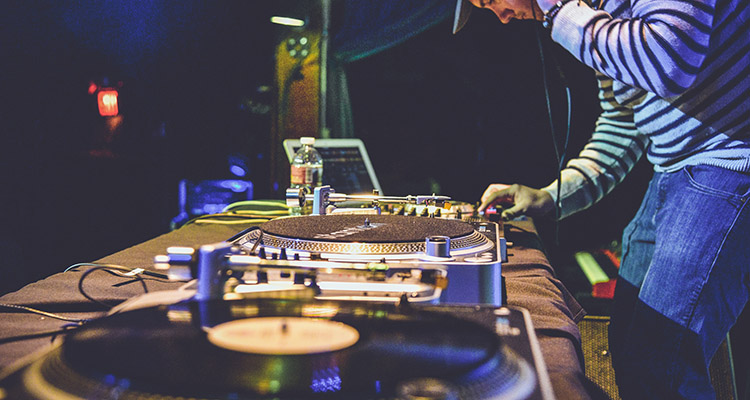By: Nadeem Bohsali

Music sampling is on the rise. In 2018, twenty percent of songs on the Billboard Top 100 contained music samples.[1] That same year, sixty-six percent of all albums found on the Billboard Top 50 contained samples, averaging a staggering four samples per album.[2] Over the past 3 years, this figure remained in the neighborhood of twenty and twenty-five percent.[3] However, roughly ten years ago, only fourteen percent of songs on the Billboard Top 100 contained samples. With Hip-Hop, Pop, and Electronica representing substantial portions of the Billboard top 100, music sampling is likely to become more ubiquitous over time.[4]
While music has been circulated, adapted, and transformed by oral tradition for many years, the practice of mechanical sampling only grew popular during the 1980’s, as hip-hop rose to fame.[5] However, this practice has been used in commercial music since before 1967, when the Beatles introduced All you Need is Love with the beginning instrumental from La Marseillaise (the French National Anthem).[6] The practice has evolved technologically from the early days when two turntables and a cross fader were the only tools of the trade, allowing for easier, quicker, and more complex samples.
The legal status of music sampling is hotly contested, to say the least. Since Biz Markie sampled Gilbert Sullivan’s instrumental track in “Alone Again (Naturally)”, scholars and judges have evaluated the propriety of the Fair Use defense to copyright infringement and its application to sampling works.[7] In Bridgeport, the Court specifically declined to apply a de minimis exception to a musical work, instead applying a bright-line zero-tolerance approach to sampling, which has been widely criticized as having a “chilling effect” on hip hop music.[8]
Critics of Bridgeport characterize the ruling as stifling creativity through an overly strict characterization of the utilitarian framework upon which American intellectual property theory rests.[9] While a strict prohibition on sampling may have conformed to days past prior to the electronic age, advocates argue that a music sample is the modern day equivalent of a guitar chord–a single unit of expression used to construct a song.
The result of these varying interpretations is a circuit split. In May 2016, the Ninth Circuit explicitly declined to follow Bridgeport, holding that music sampling copyright infringement cases necessitate a substantial similarity infringement analysis, including the application of the de minimis analysis.[10]
Music sampling, however, may not be as nefarious a form of appropriation as some might suggest. In fact, a recent study exploring the commercial effect of samples on sales of the original work, identified with 99% significance that sales of sampled songs increased after being repurposed within new songs.[11] They concluded that their findings lend support for a restructuring of the fair use analysis as applied to music sampling.[12] If music sampling increases the notoriety and revenue of the original artist, then sampling disseminates both works. These findings controvert the zero-sum justification which stipulates that unauthorized use by sampling a copyrighted musical work disincentivizes the creation of subsequent works. Instead, if music sampling increases popularity of a given work, then repurposing songs in new, transformative works could incentivize the creation and dissemination of music.
Because their findings were very recently published, the Schuster study may prove to be interesting fuel for the next music sampling case that makes its way through the courts. Empirical data could very well foster faith and certainty in the success of the fair use doctrine as applied to music sampling.
[1] 1. See Oskar, State of Sampling, tracklib (Feb. 7, 2019), https://www.tracklib.com/blog/tracklib-presents-state-of-sampling/
[2] See id.
[3] See id.
[4] See The Hot 100, Billboard, https://www.billboard.com/charts/hot-100.
[5] Add authority.
[6] All You Need Is Love by The Beatles, WhoSampled, https://www.whosampled.com/The-Beatles/All-You-Need-Is-Love/.
[7] Bridgeport Music, Inc. v. Dimension Films, 410 F.3d 792 (6th Cir. 2005); Erik J. Badia, Split Chords: Addressing the Federal Circuit Split in Music Sampling Copyright Infringement Cases, 7 PACE INTELLECTUAL PROPERTY, SPORTS & ENTERTAINMENT LAW FORUM 131 (2017), available at https://digitalcommons.pace.edu/cgi/viewcontent.cgi?referer=&httpsredir=1&article=1061&context=pipself.
[8] See Nelson, Hip Hop America (Penguin 2005).
[9] Supra Note 7.
[10] See id.
[11] See Schuster et al., Sampling Increases Music Sales: An Empirical Copyright Study, 56 AMER. BUS. L. J. 177 (2019), available at https://onlinelibrary.wiley.com/doi/full/10.1111/ablj.12137.
[12] See id. (“Findings of this nature favor a judicial determination
that sampling constitutes a fair use, even when considering the influence that a new work
has on extant licensing markets for sample clearance.”)
image source: https://producelikeapro.com/blog/5-most-sampled-drum-beats-in-hip-hop/
